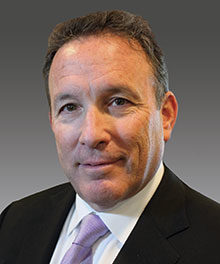Ferris Bueller's Day Off

It’s June, and that means one thing. Graduation. A rite of passage and occasion for celebrating like no other. But once all the mortar boards come back down to earth and the young people who tossed them skyward come down from the high of having finally made it through four years or more of schooling, a cold sober reality awaits.
A great many of them will be starting their adulthoods deep in debt. Whether they are high school graduates about to enter college, or post-secondary graduates striving to enter the workforce, student loans are about to become a crushing economic force in their lives. And it is a force with the power of rushing water. There’s no holding it back, and the specter of drowning is real.
Student debt in this country now stands at $1.1 trillion. It’s no wonder. The National Center on Education Statistics calculated that in the past decade, the cost of undergraduate tuition, room, and board at public colleges and universities rose 42 percent, while the cost at private not-for-profit schools rose 31 percent, after adjustment for inflation. That translates to an average of $13,600 for public college tuition, and between $23,500 (for profit) and $36,300 (not-for-profit) for private college tuition in the 2010-2011 school year. And that’s just the average. As any Ivy Leaguer can tell you, the top schools command multiples of those figures.
Speaking of multiples, also exacerbating the problem is that the interest rate charged on student loans is four-and-a-half times higher than the federal discount rate, which is the rate the Federal Reserve charges on loans to member banks. To our shame, student Stafford loans currently carry a rate of 3.4%, vs. 0.75% on loans to (Your Bank Here). There is something seriously wrong with this picture. And it could very well get worse. There are competing proposals in play in Washington calling for even higher rates on student loans, and the most draconian of them wants a doubling.
So our graduates are saddled with exorbitant tuitions that are financed at unmanageable levels, in an economy where more than half of bachelors’ degree-holders under the age of 25 were unemployed or underemployed last year. It’s downright scary out there.
If things don’t change, a mass default on the $1.1 trillion is almost inevitable. Student debt is very likely to be our next economic crisis. Greater minds than mine think it’s a matter of when, not if.
A college education has always been one of the most significant investments a family could make. But previous generations made it their business to save for the day their children would attend college. Today, fewer than half of U.S. families with children under 18 are saving for college, and nearly half of those who aren’t say the reason why is not money. It’s a combination of other things that in my opinion amounts to shirking responsibility. We do a lot of things better now than we did 50 years ago in this country, but saving for college isn’t one of them.
Moreover, over 40 percent of families who are saving are using the wrong types of savings vehicles, like CDs, for example. Only a quarter of savers use tax-advantaged 529 plans, which were created expressly for this purpose. At Marcum, we strongly recommend 529 plans to our clients as the best currently available option for college savings.
In an economic environment where the ROI of a college education continues to flatten, viable alternatives must be considered. I’m certain this is what NYC Mayor Bloomberg was thinking when he used the bully pulpit of his radio show last week to point out that vocational careers like plumbing can be well compensated, do not require 5- or 6-figure tuition bills, and cannot be outsourced overseas. Smart man, Mayor Bloomberg.
I graduated from Hofstra University on Long Island in 1979. My college education cost $12,000, for which I was in debt $10,000 at graduation. It cost me $96 per month for ten years to repay that $10,000, which I paid like clockwork each and every month of those ten years. My starting salary out of college at one of the “big eight” accounting firms at the time was $14,500 per year. Today, someone following the same career path as I and in a comparable financial situation would be $100,000 in debt and would earn a starting salary of less than $70,000 per year. Ten times the debt with just less than five times the pay.
It is for certain that a crisis is looming, and we cannot afford to ignore it. The impact on our economy, not to mention the psyche of the generation that will inherit responsibility for restoring America’s competitive dominance in the world market, could make the recession of 2008-2012 seem like Ferris Bueller’s day off.
